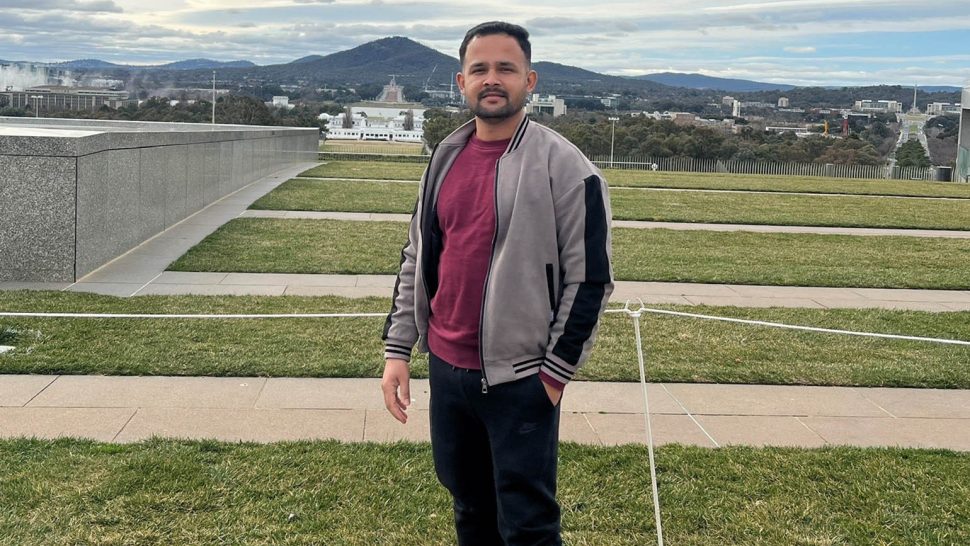Growing up in a rice-farming family in Nepal, Suman Gajurel witnessed firsthand how small changes in farming practices could significantly impact productivity and livelihoods. The resilience and hard work of his grandparents and parents, despite the challenges of subsistence farming, deeply moved him and sparked his passion for agricultural science.
“Stemming from my childhood experiences, I became particularly interested in understanding how scientific advancements and technological innovations can improve traditional farming methods,” he said.
“The potential to enhance crop yield, manage diseases, and optimise resource use through agronomy and environmental science is incredibly motivating.”
This drive led Suman to pursue higher education in agriculture, where he focused on cutting-edge topics like digital soil mapping, geostatistics, and machine learning for soil modelling.
In 2019 he moved to Western Australia to start a Master of Science in Agriculture at Curtin University. It was during his Master’s research that he came across a Soil CRC PhD scholarship that aligned with his interests and decided to embark on his next big challenge.
“My PhD was based at the University of Southern Queensland (USQ) and focussed on modelling and diagnosing multiple soil constraints across Australia using existing datasets,” Suman said.
“This research contributed to a Soil CRC project led by Dr Keith Pembleton at USQ and led to the development of a data-centric diagnostic framework that can diagnose soil Plant Available Water Capacity (PAWC).
“This tells us about the water-related soil constraints present in the field using farm management data, soil properties, crop observed yield and APSIM (Agricultural Production Systems sIMulator) software,” Suman explained.
“I also built models that can predict soil chemical and physical properties, to help us identify soil constraints present in the field, using a machine learning approach.”
Once the framework and models are available as software or web-based tools, Suman believes they will be invaluable for both farmers and researchers.
“These tools will help diagnose soil chemical and physical constraints cost-effectively, enabling more informed and efficient soil and agricultural management practices,” he said.
When asked what he is most proud of, Suman highlighted the PAWC prediction framework he and the project team created.
“This framework has the capacity to predict PAWC across different soil and climatic conditions, providing valuable insights for farmers and researchers. This achievement not only represents a significant advancement in soil science but also has practical applications in improving agricultural practices,” he said.
“I am also really proud of my journey from Nepal to Australia to pursue higher education in agriculture. Adapting to a new country and excelling in my studies has been a personal achievement that has broadened my horizons and strengthened my commitment to making a positive impact in the field of agriculture.”
Suman said the possibility of contributing to sustainable agriculture and making a tangible difference in the lives of farmers around the world continues to inspire him and drive him forward.
He is currently working as a casual research assistant at the University of Southern Queensland, where he is involved in a sesame crop modelling project with AgriFutures Australia.
“I’m keen to take on full time work in the field of agricultural and environmental modelling, particularly in roles that focus on developing and implementing predictive models to enhance crop production and sustainable agricultural practices.
“My goal is to contribute to innovative research and practical applications that can address the challenges facing modern agriculture,” he said.
Outside of work, Suman said he enjoys travelling and reading books.
“Travelling allows me to explore new cultures and landscapes, which broadens my perspective and inspires my work. While reading provides me with a wealth of knowledge and ideas that fuel my passion for agricultural science and other interests,” he said.
“Both hobbies enrich my life and contribute to my personal and professional growth.”
We’re excited to see where Suman’s travels take him next.
Find out more
- Read Suman’s latest publication: Gajurel, S., Lai, Y., Lobsey, C., & Pembleton, K. G. (2024). A cost-effective approach to estimate plant available water capacity. Geoderma, 442, 116794. https://doi.org/10.1016/j.geoderma.2024.116794
- Connect with Suman on LinkedIn
- View Suman’s student profile

